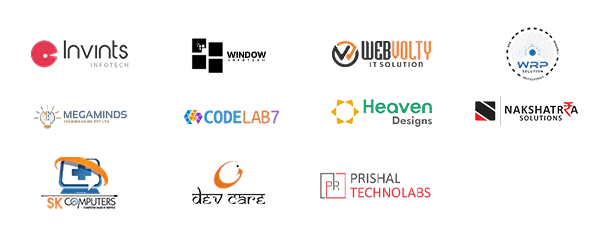Employee Panel
Offer a platform that enables employees to manage daily tasks efficiently.
Include features for task management and progress tracking.
Implement a system for leave requests and approvals.
Provide a tool for creating and managing support requests.
Facilitate the scheduling of internal meetings within the platform.
Incorporate a process for asset requisition and allocation.
Allow access to company's public documents through the platform.
Enable employees to view their attendance records.
Offer a feature for downloading salary slips securely.

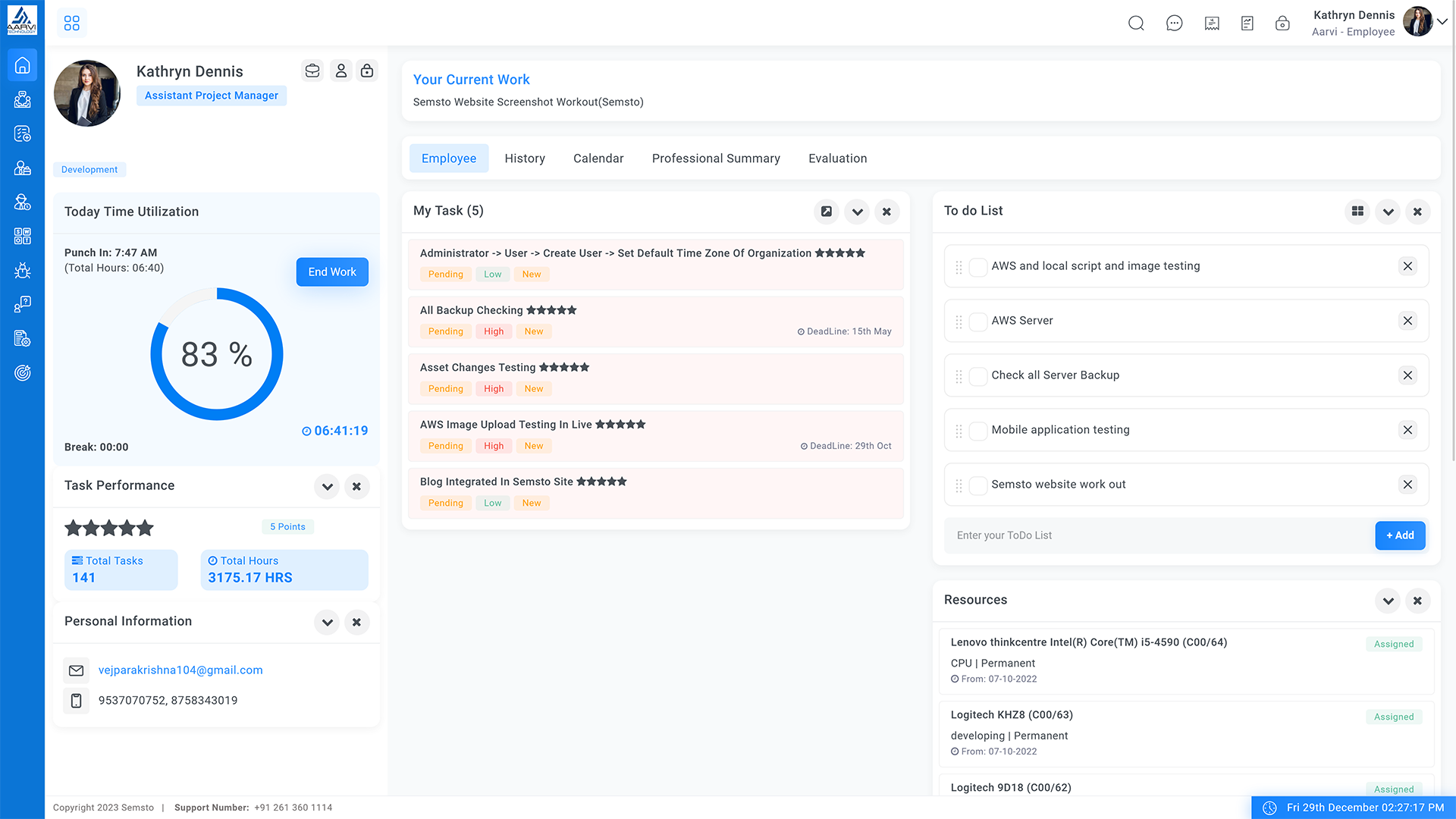
Foster effective communication and collaboration between the organization and employees through an interactive interface.
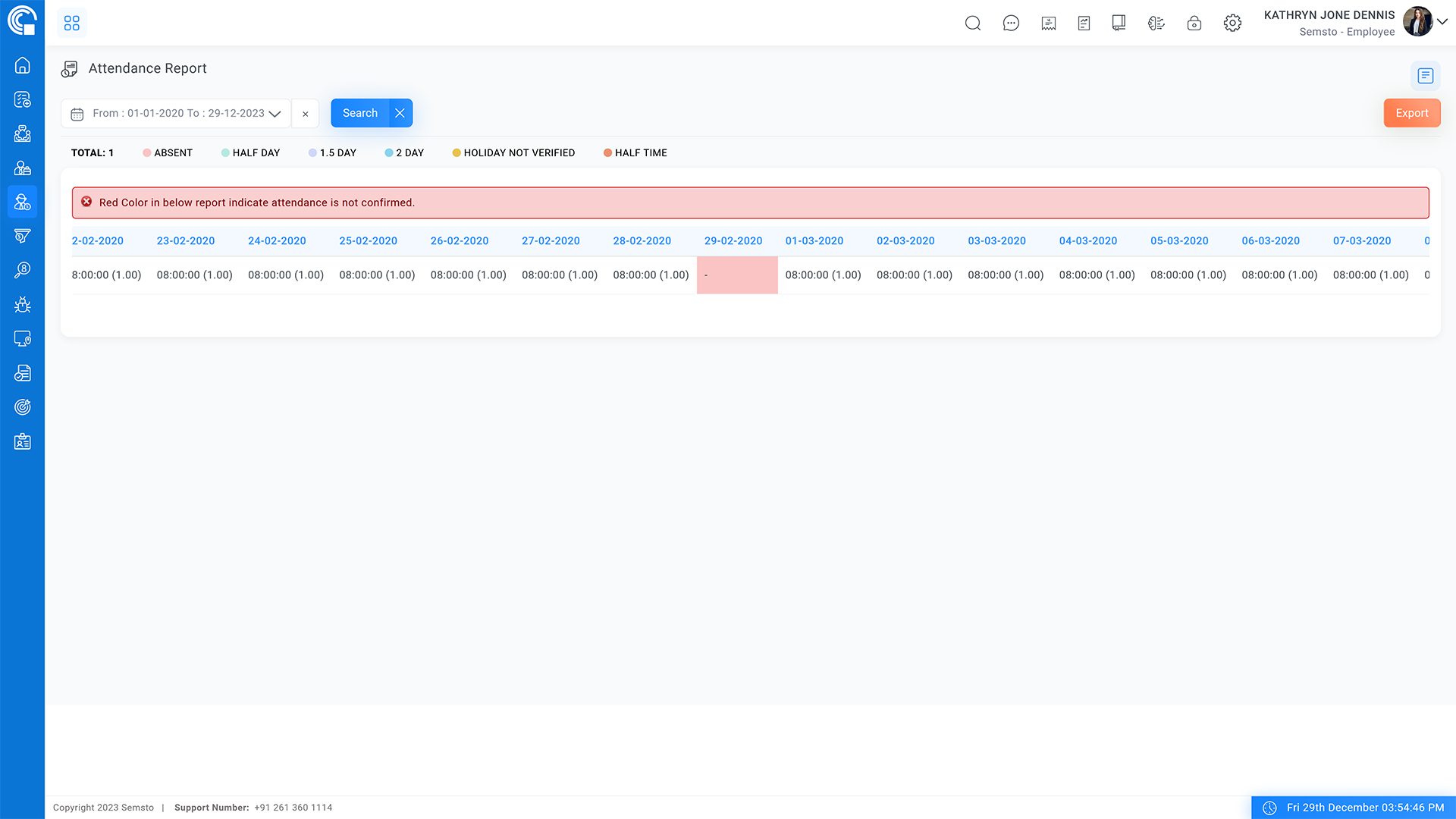
Implement systems to verify and track employee attendance, ensuring accuracy and compliance.
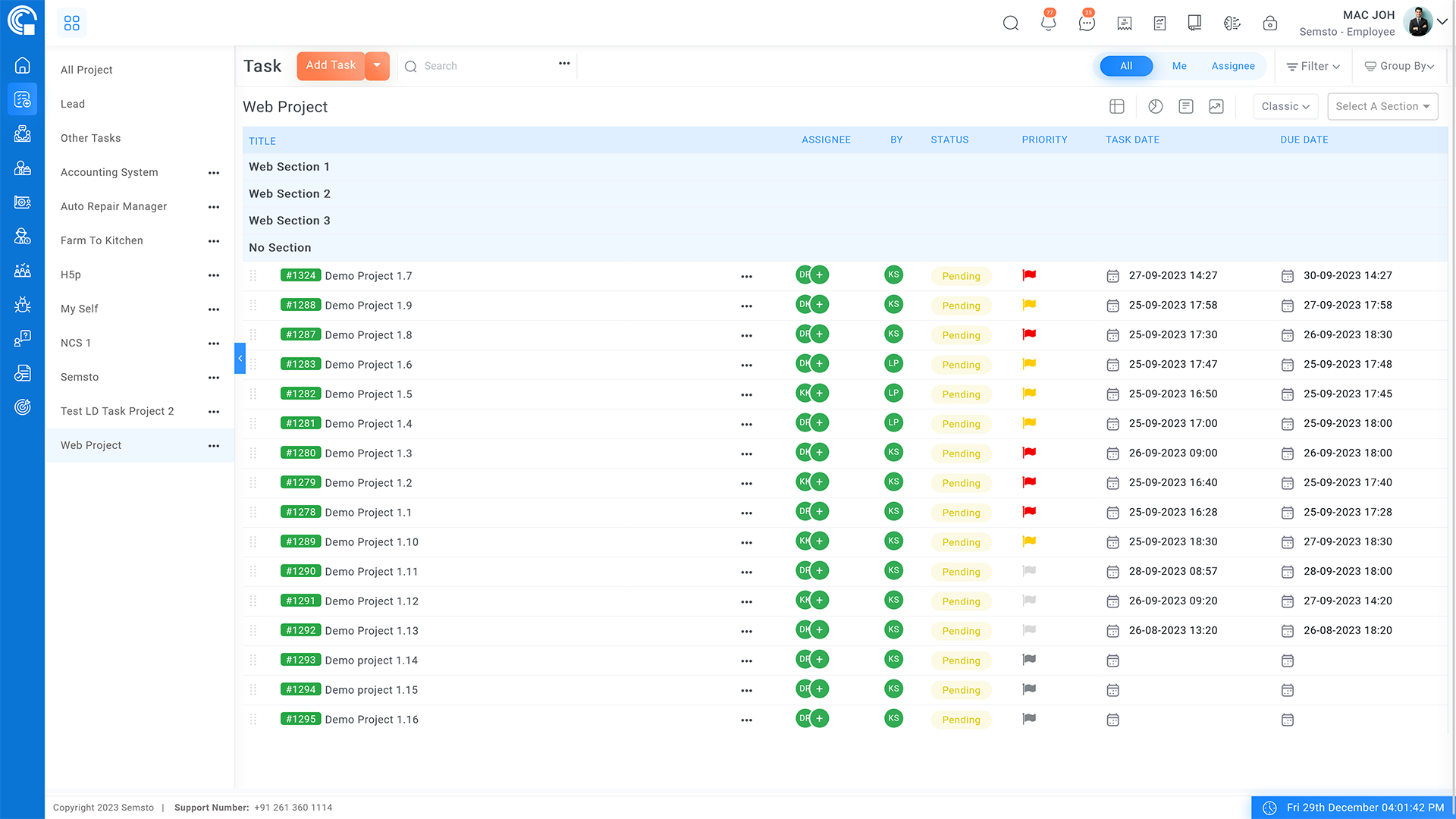
Enable streamlined management of assigned tasks, enhancing productivity and project tracking.
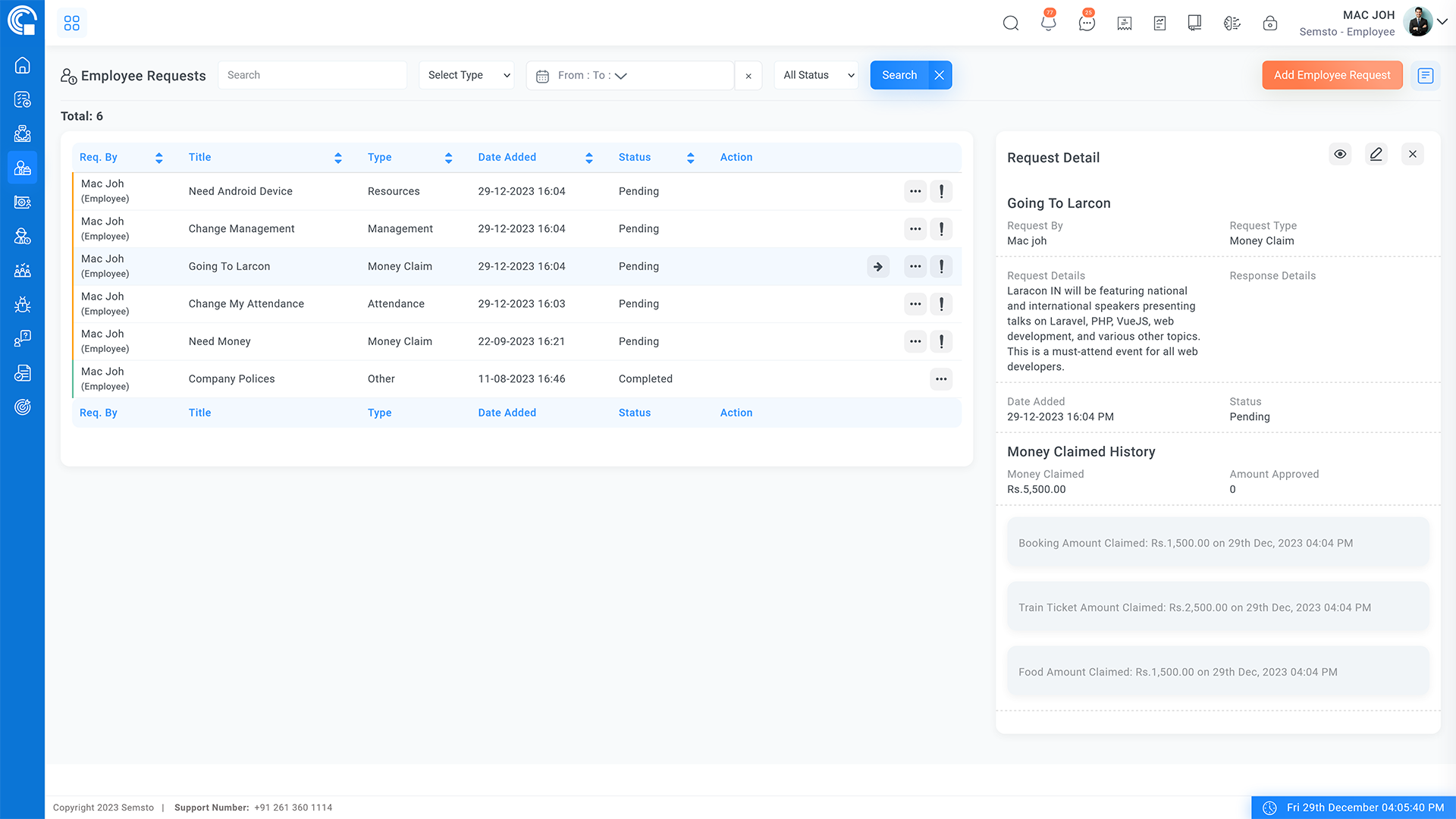
Address and resolve employee inquiries and disputes promptly, promoting a harmonious work environment.
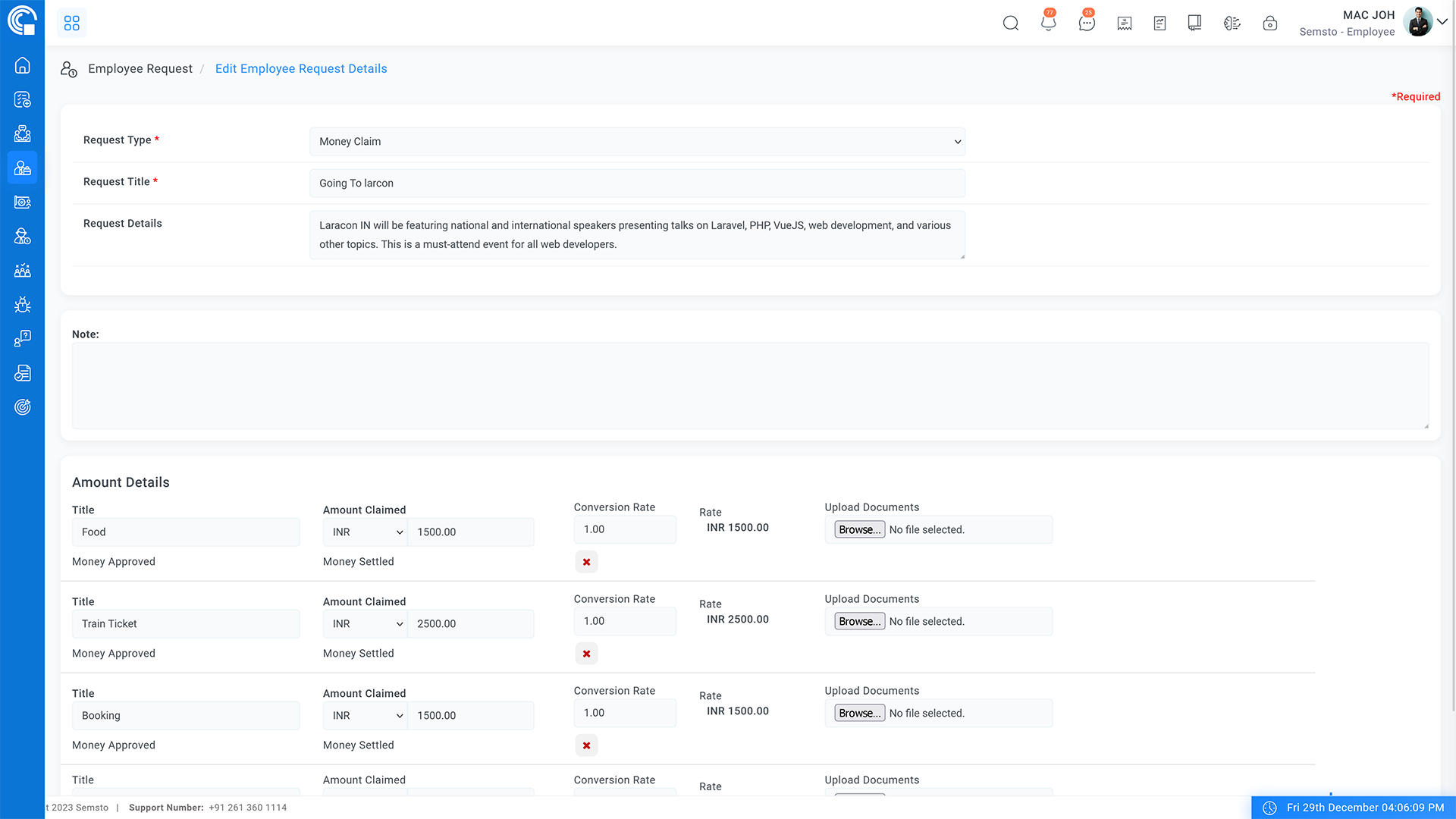
Simplify and expedite the process for settling financial claims, improving employee satisfaction.

Provide a user-friendly platform for employees to request leaves, simplifying HR operations.
Streamline internal meeting's scheduling and time monitoring for more effective time management.
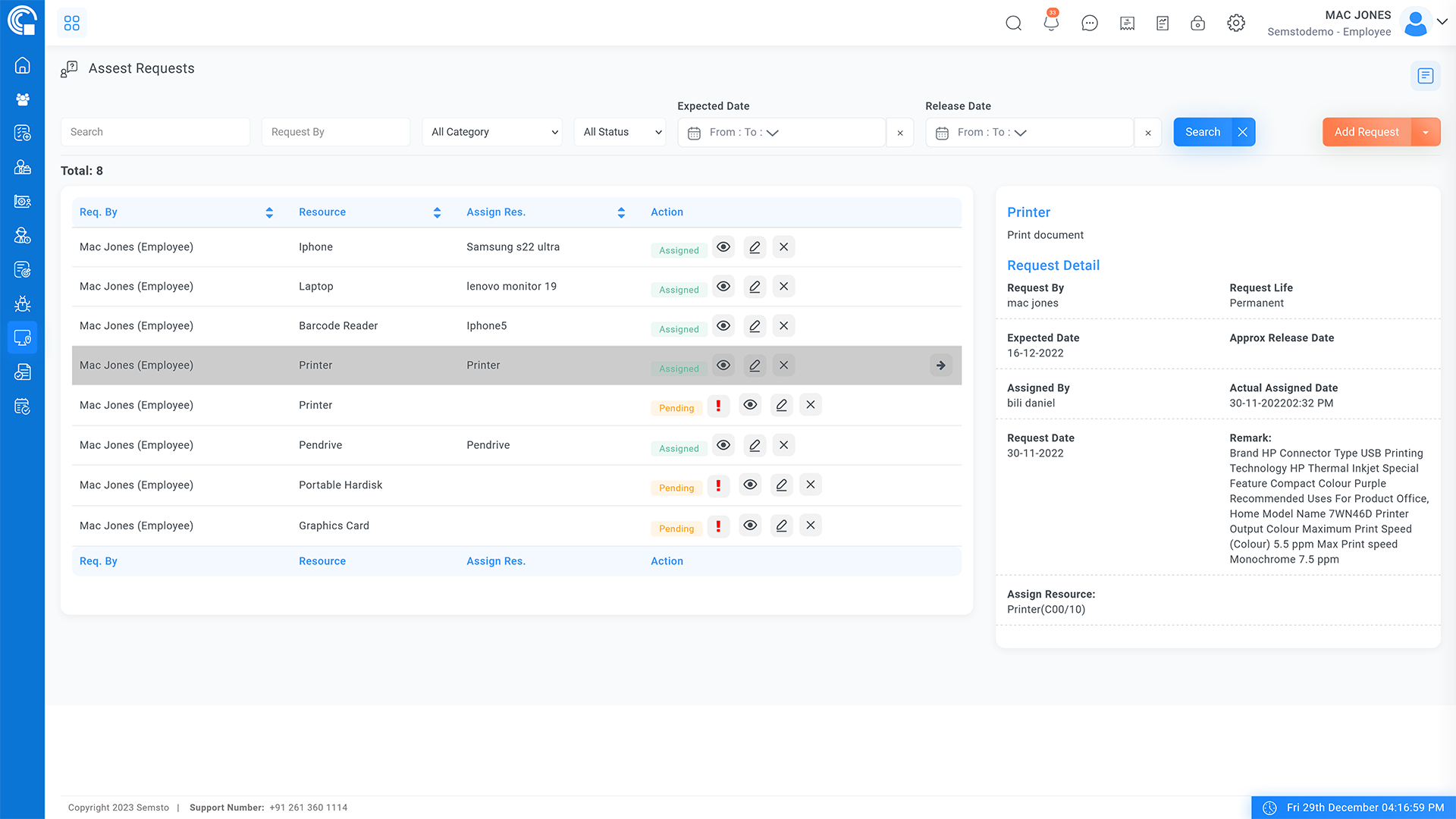
Simplify the asset requisition process, ensuring timely access to necessary resources.
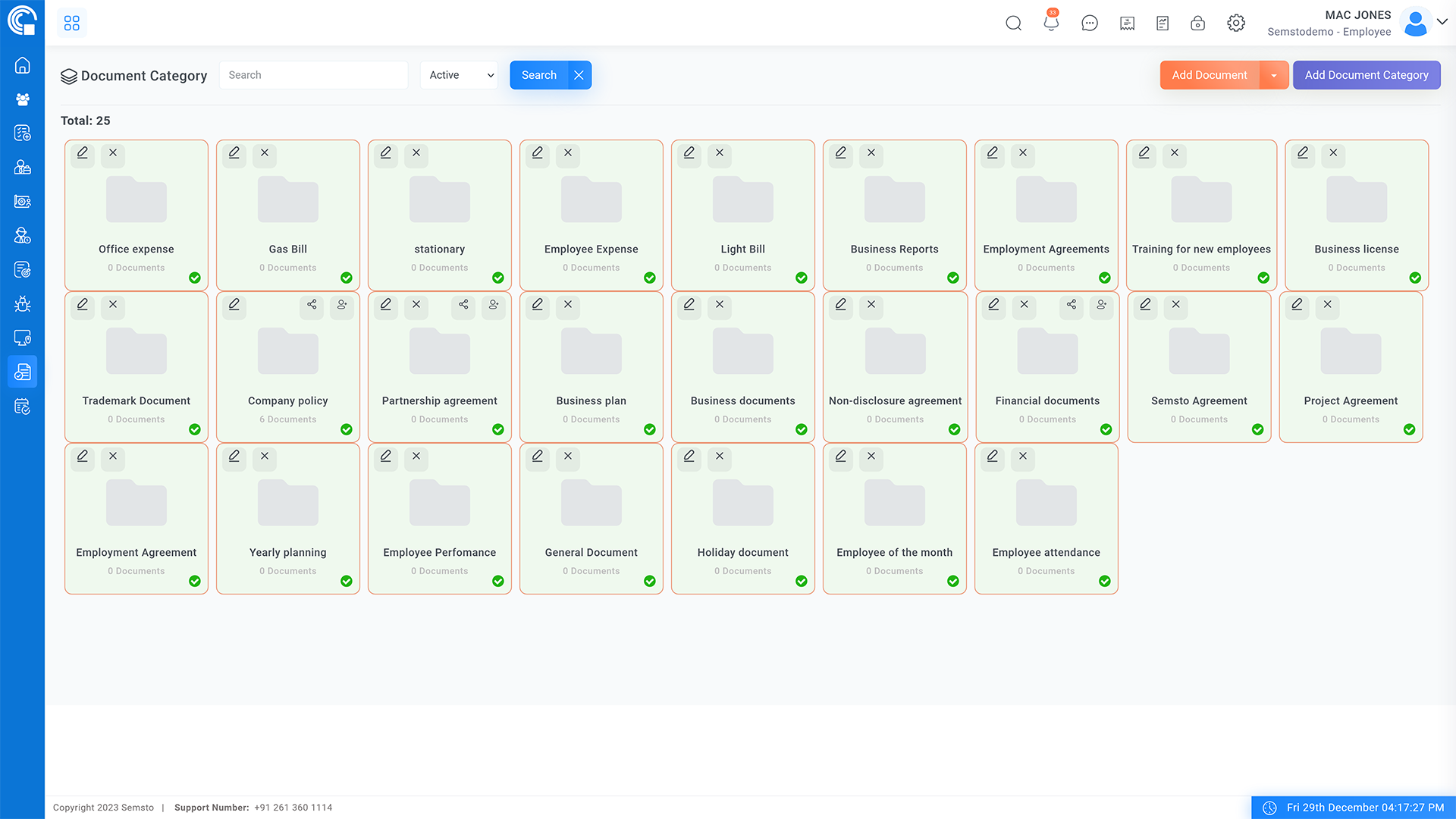
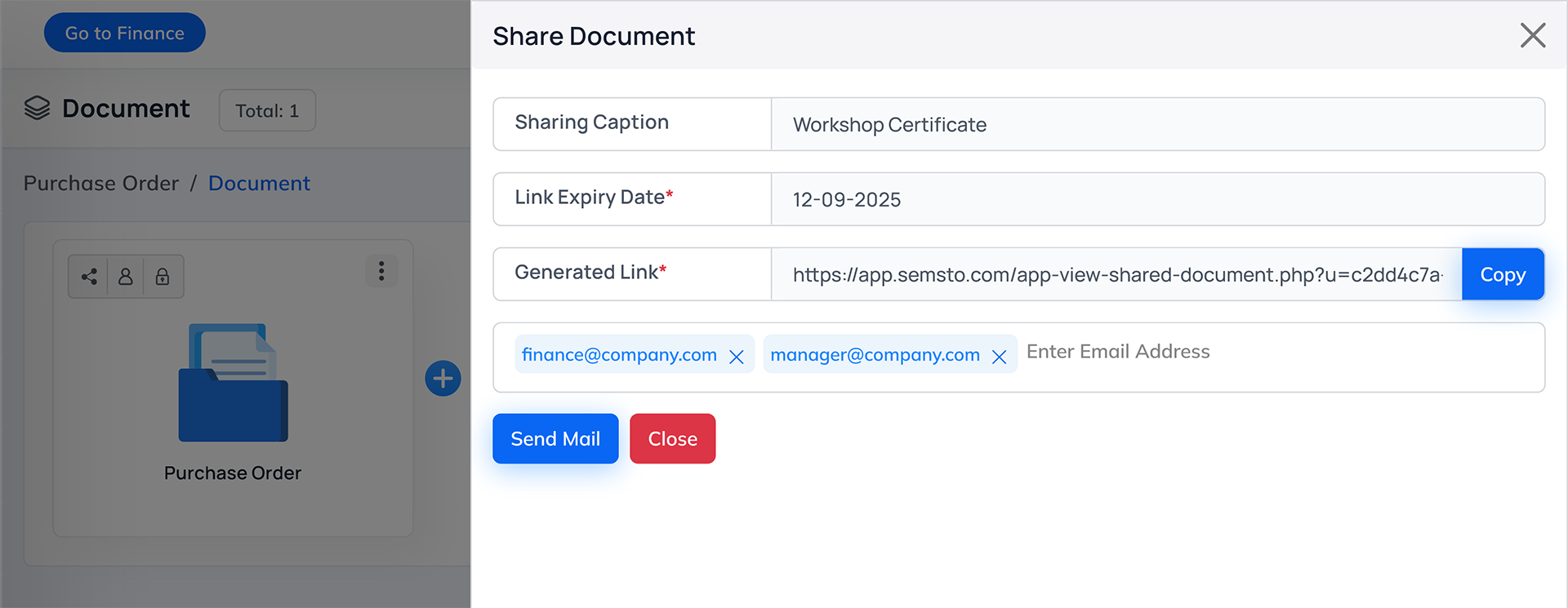
Facilitate the sharing of documents among team members, promoting collaboration and knowledge sharing.
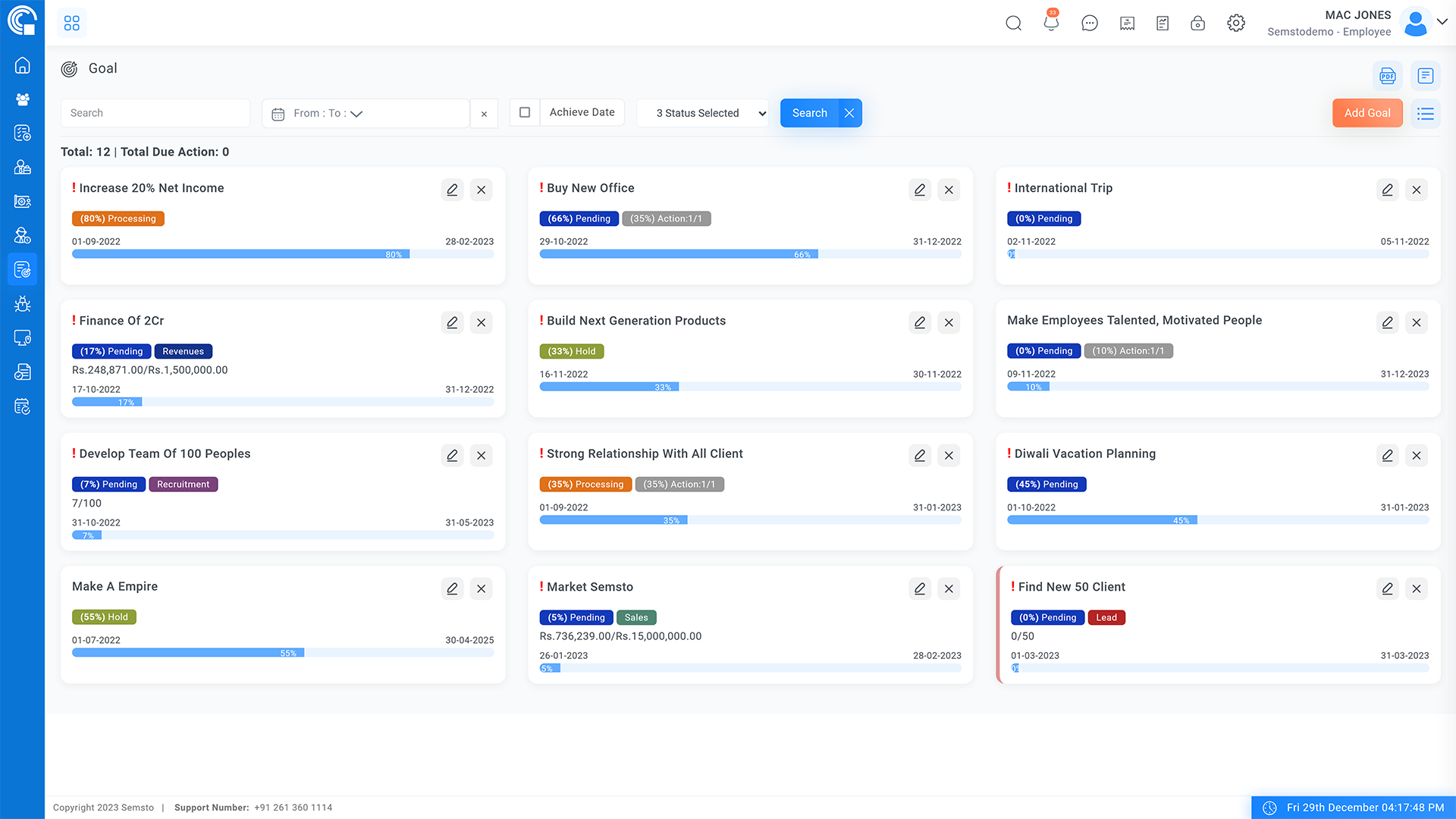
Assist in goal setting and management, aligning employees with organizational objectives.
Maintain a system to track SWOT analysis, enabling strategic decision-making.
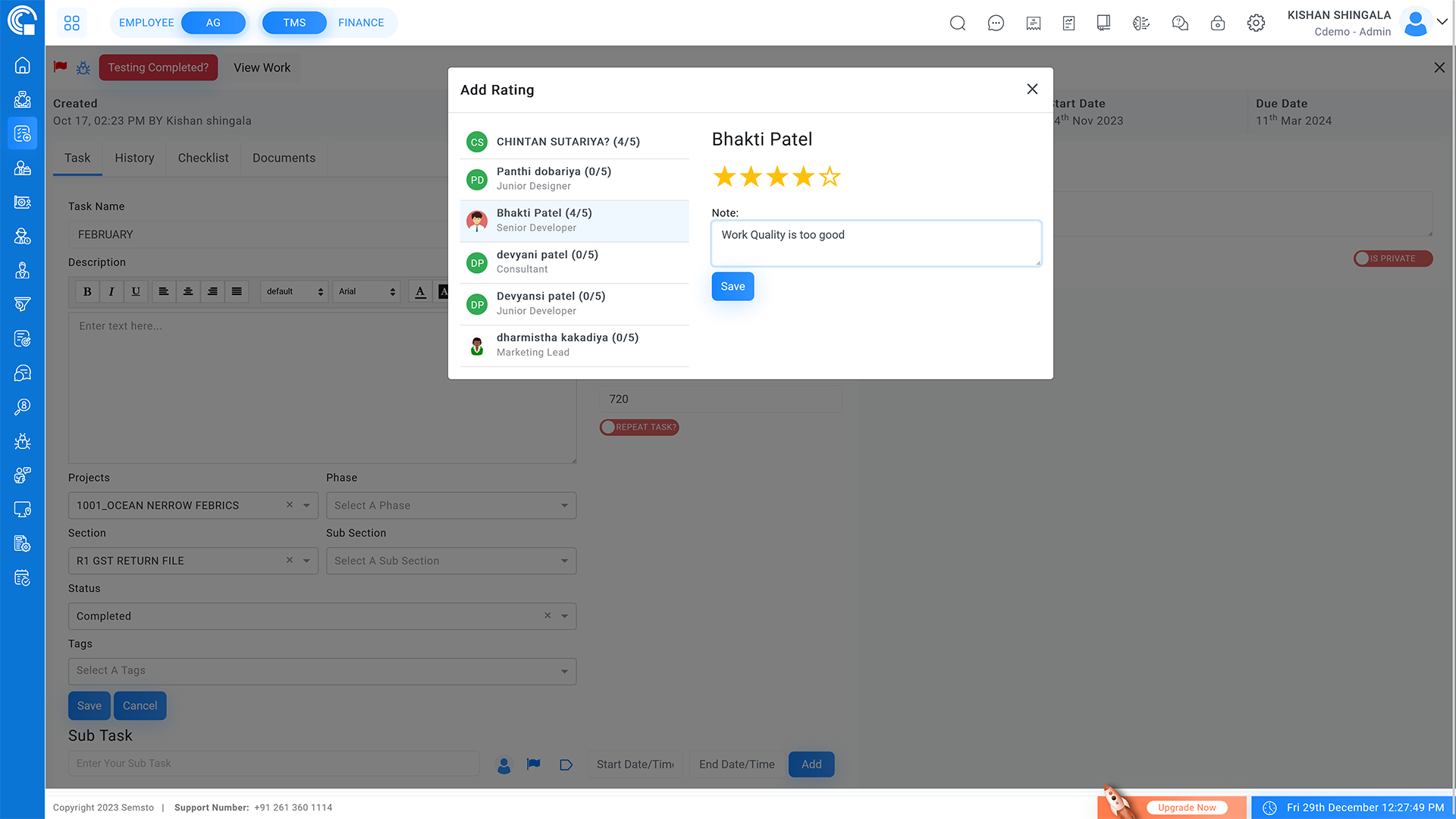

Implement a system for task review and ratings, facilitating performance evaluation and improvement.
Capabilities
Dashboard
Provide a dashboard for employees to perform routine tasks efficiently.
Enable access to a work summary, including recent activities and performance metrics.
Include a To-Do List for streamlined task management.
Offer visibility into team member's work for better collaboration.
Display summaries of recent interviews conducted.
Show current status of resources for effective planning.
Facilitate management of leave and overtime requests.
Incorporate a calendar feature for scheduling and tracking important dates.

Task Management
Oversee and manage all allocated tasks efficiently.
Attach and link relevant documents to tasks for easy access.
Facilitate task delegation to other team members as needed.
Accelerate task
Respond to and clarify any concerns raised by supervisors.
Seek clarifications from team members when necessary.
Implement a system for rating tasks based on performance and quality.
AI refines task descriptions for clarity, accuracy and professionalism.
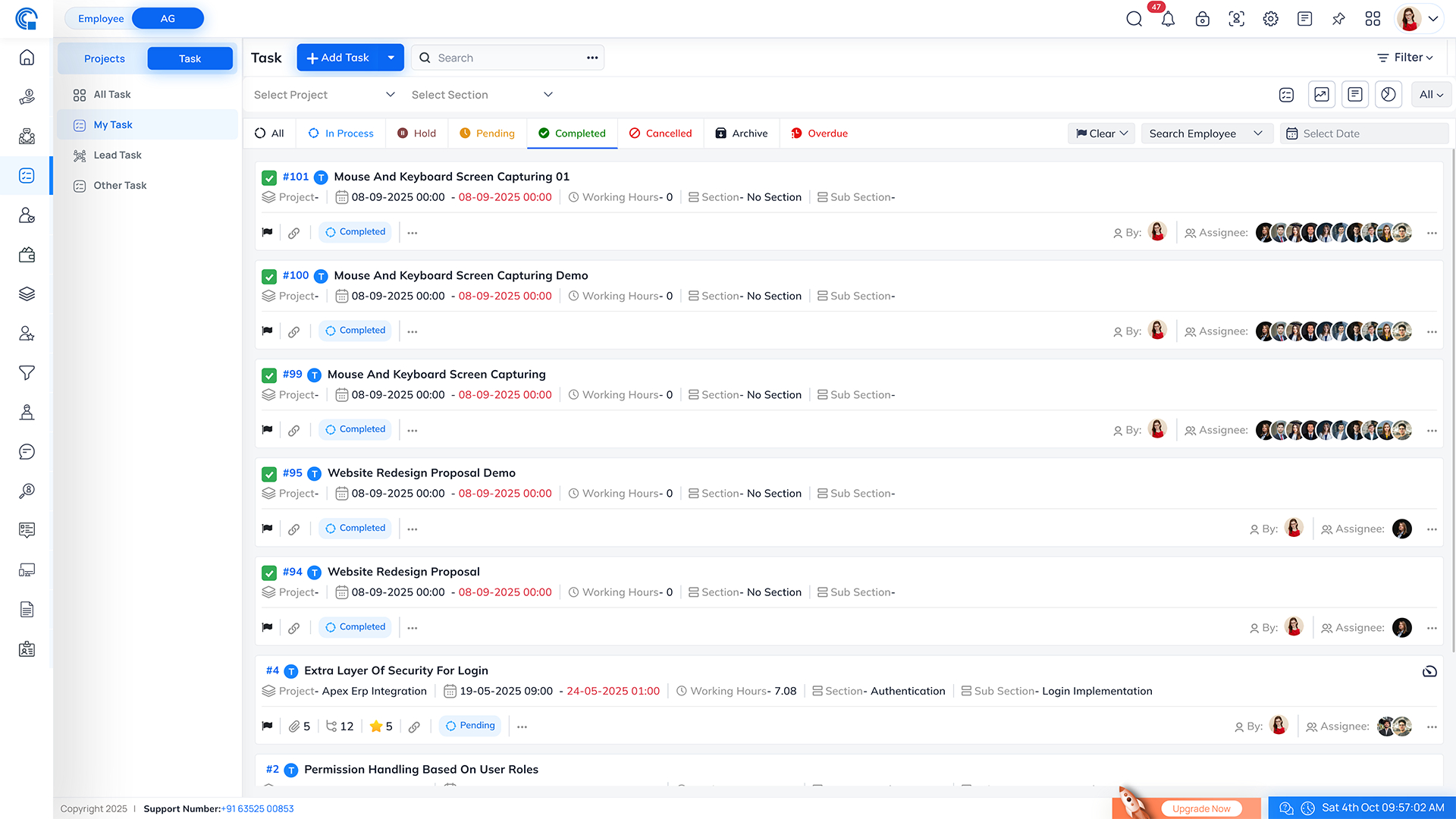
Employee Request
Traditionally, employees approach management directly with complaints.
Introduce a dedicated interface for employees to submit requests or disputes.
Allocate these submissions to the relevant department for resolution.
Implementing this system can significantly contribute to organizational growth.

Money Claim
Recognize situations where employees incur expenses for company-related trips or conferences.
Provide an interface for employees to request reimbursements for such expenses.
Include a feature to track the status of these reimbursement requests.
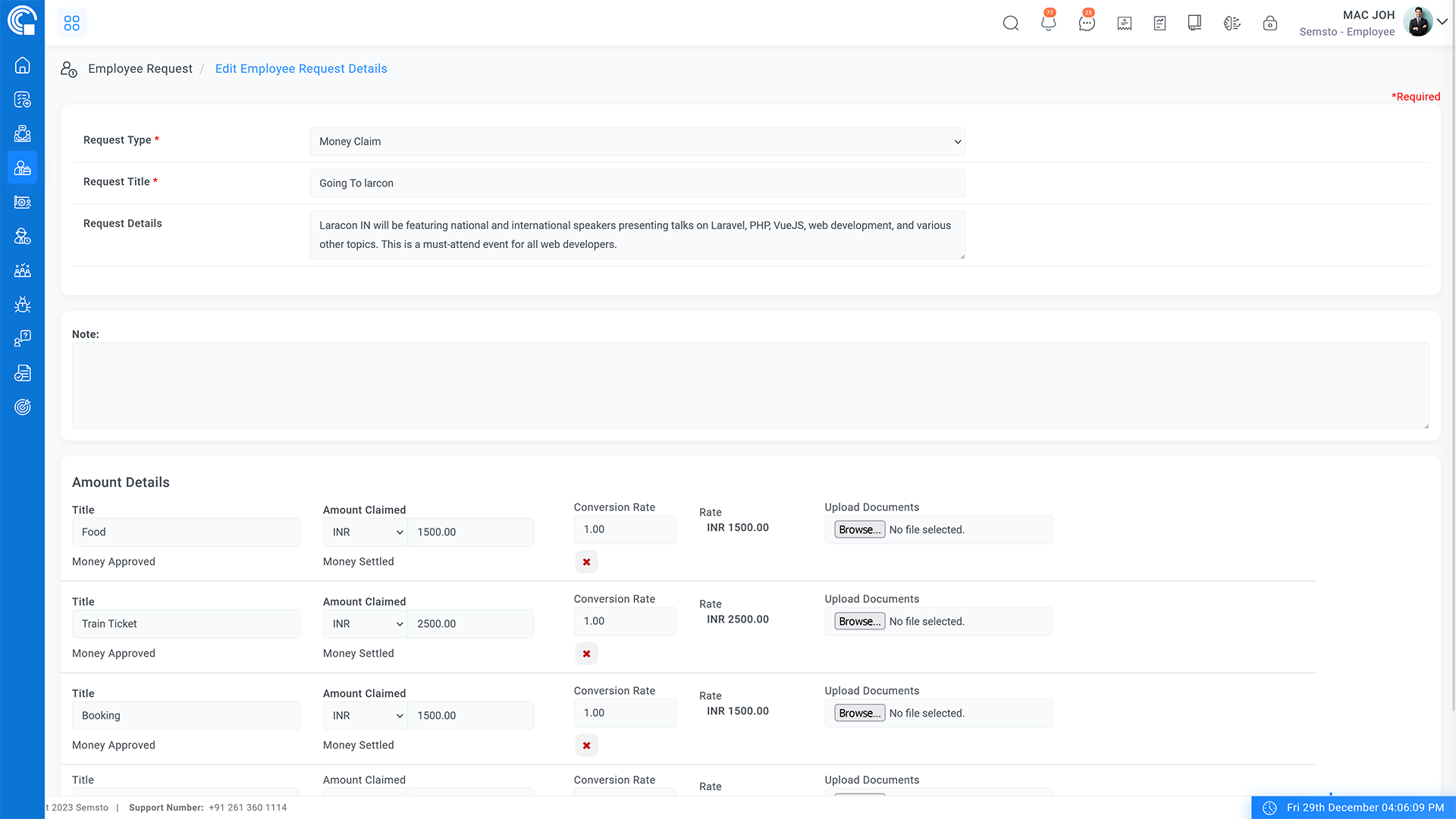
Adjust Team Member's Attendance
Enable supervisors to be informed when employees take work breaks.
Allow supervisors to adjust attendance records directly.
Streamline the process to exclude the need for involving the payroll department in these adjustments.
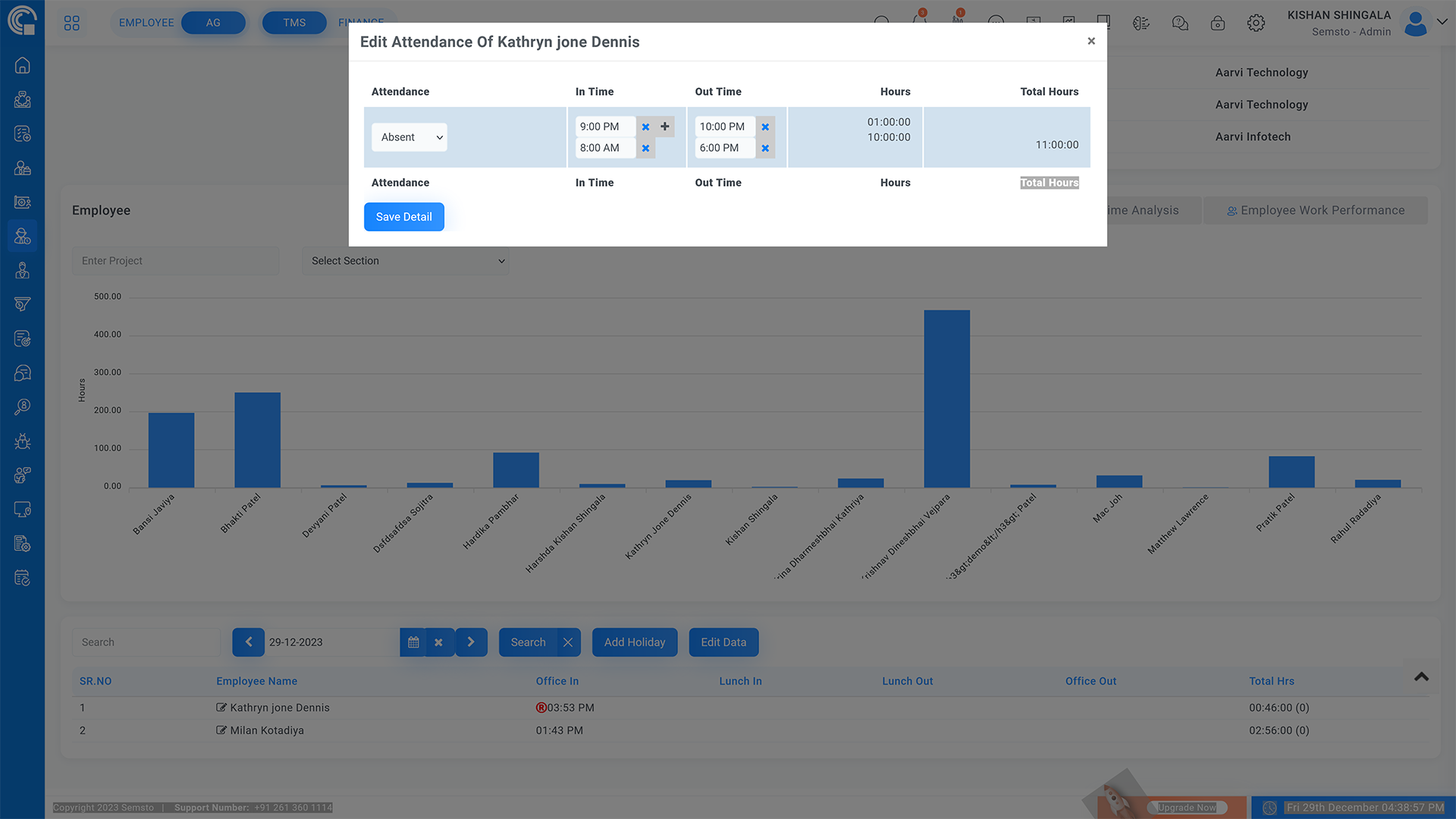
Payroll
Empower employees to access and review their own attendance records.
Provide a feature for employees to retrieve past payslips independently.
This approach reduces the HR team's workload and speeds up employee services.
Allow employees to view loan details, track payment plans and generate foreclosure statements.
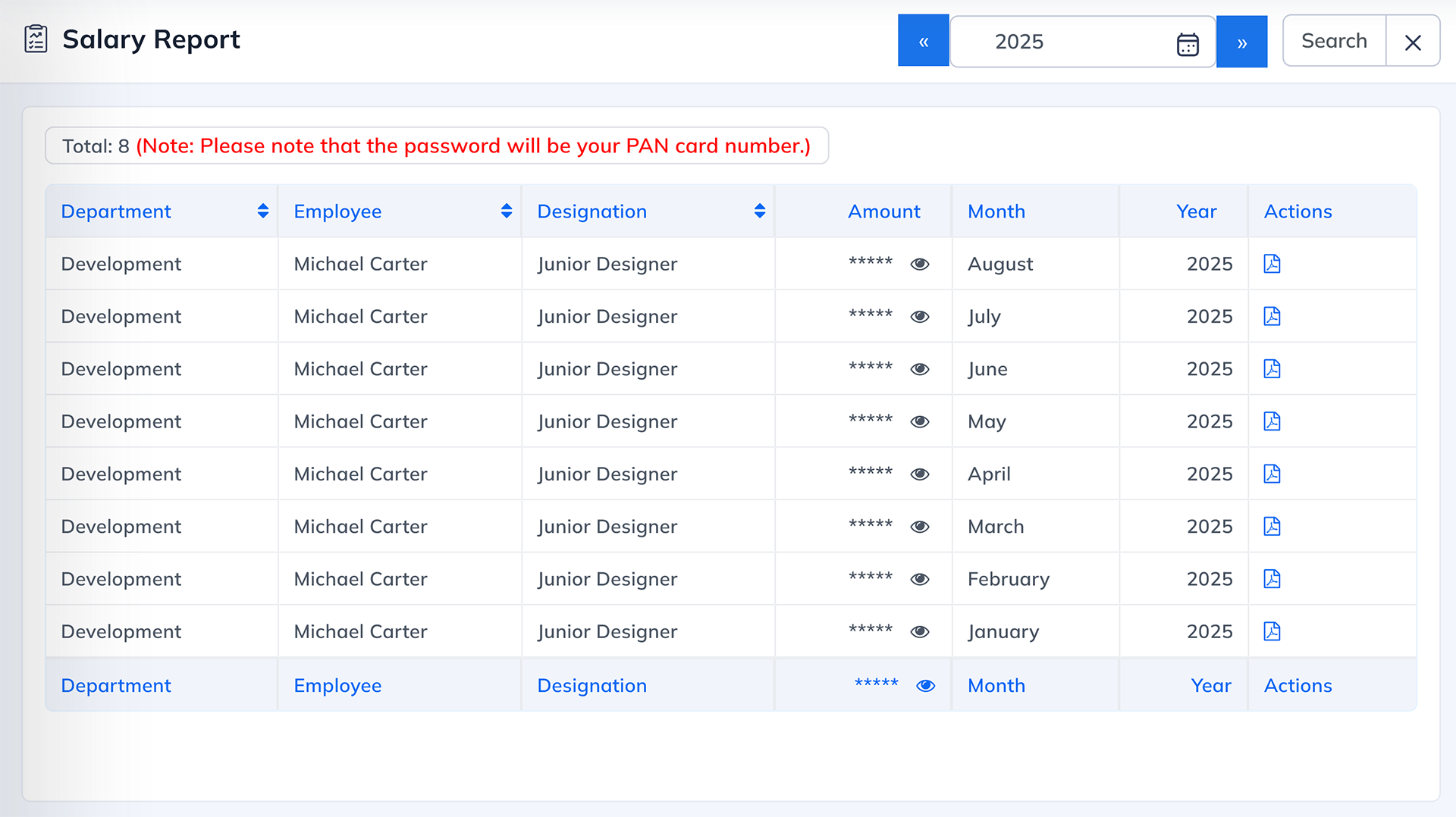
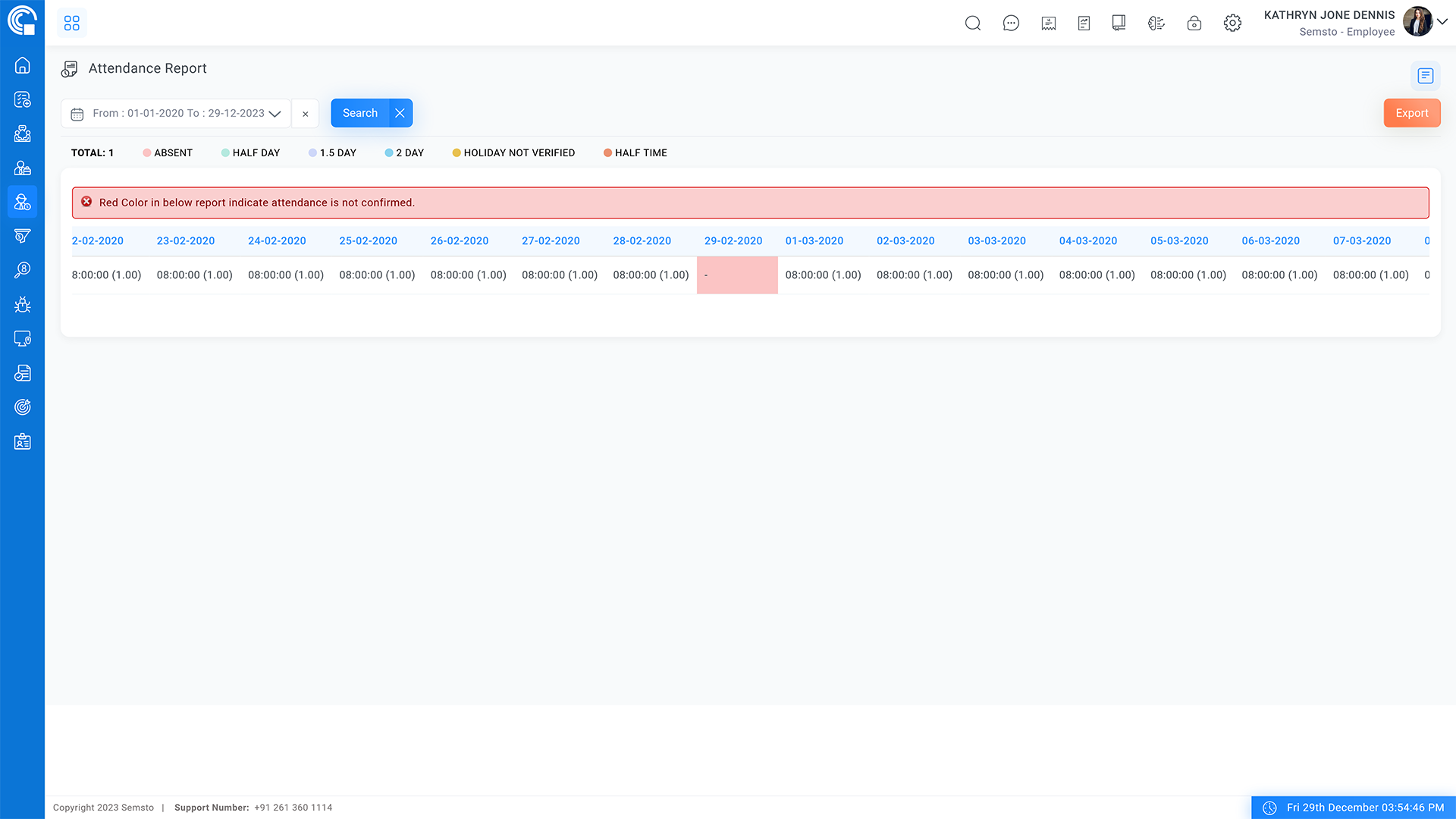
Leave Request
Facilitate a system for employees to apply for leave and view the status of their requests.
Implement a hierarchical approval process for leave applications.

Overtime Request
Provide a feature for employees to request overtime work.
Implement a hierarchical approval system for these overtime requests.
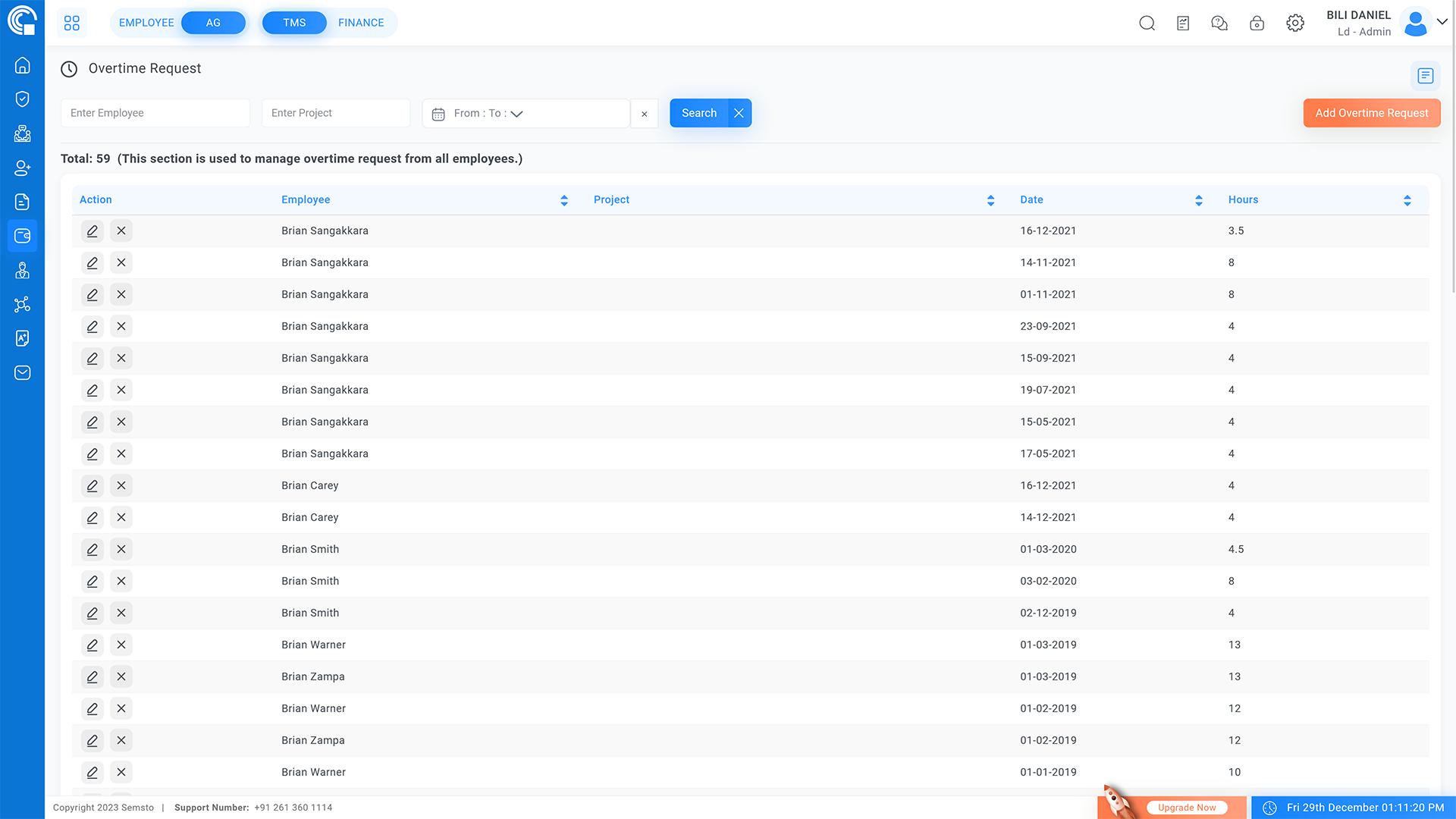
Meetings
Enable employees to schedule internal meetings with team members.
Allow sharing of Minutes of Meeting (MOM) with all team members post-meeting.
Incorporate a system to keep track of all meeting durations.
Implement a feature for managing documents associated with meetings.
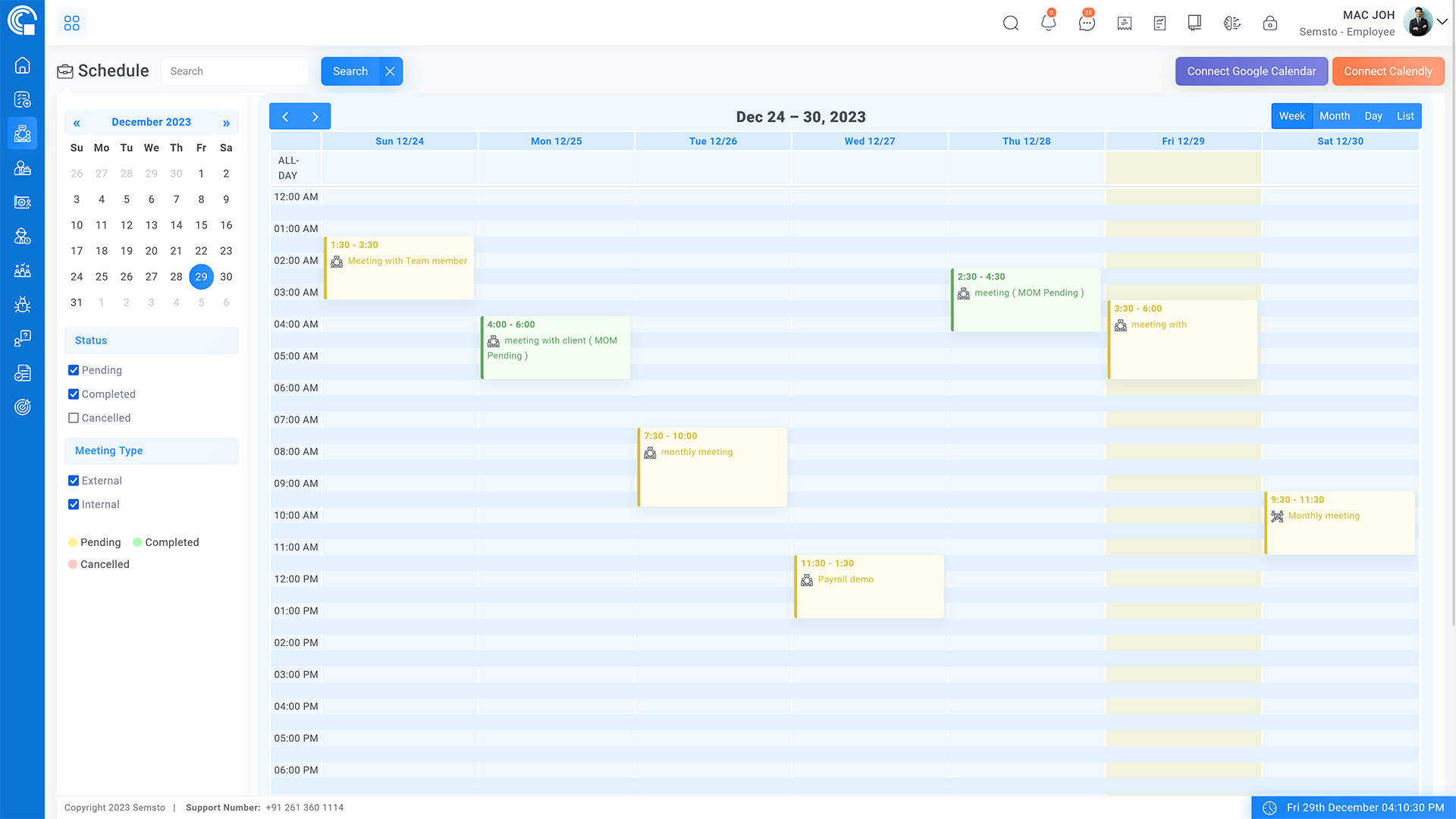
Asset Request
Facilitate a streamlined process for employees to submit asset requests.
Allow employees to specify the type and quantity of assets needed.
Enable tracking of asset request status, from submission to fulfillment.
Incorporate an approval workflow for asset requests, involving relevant supervisors or departments.
Provide options for employees to justify or explain the need for requested assets.
Set up notifications for updates on asset request progress and approvals.
Ensure a transparent view of available assets for better request management.
Offer the ability to modify or cancel asset requests before approval.
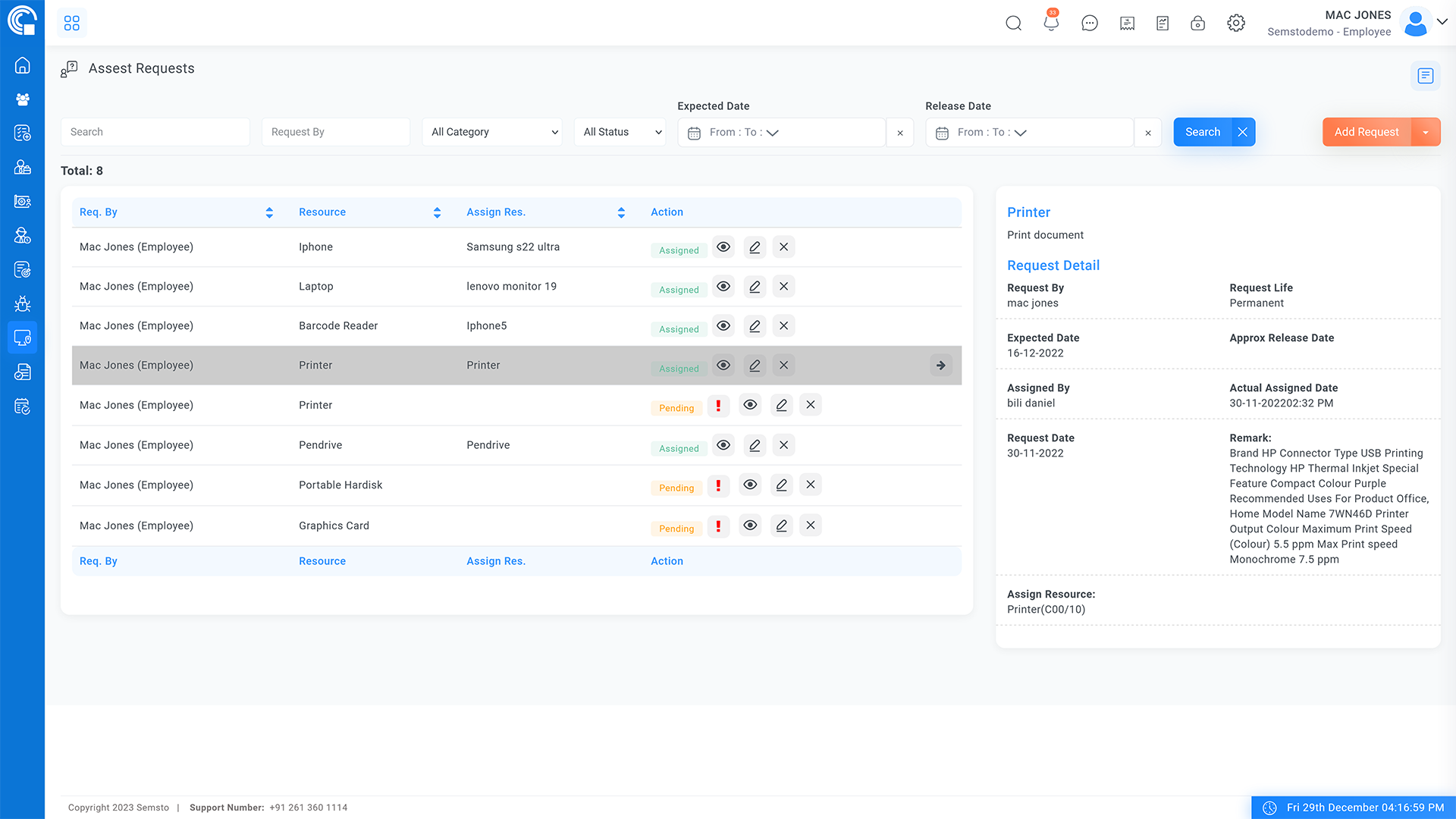
Manage Documents
Ensure all management-shared employee-related documents are readily accessible to employees.
Eliminate the necessity for employees to request these documents individually.
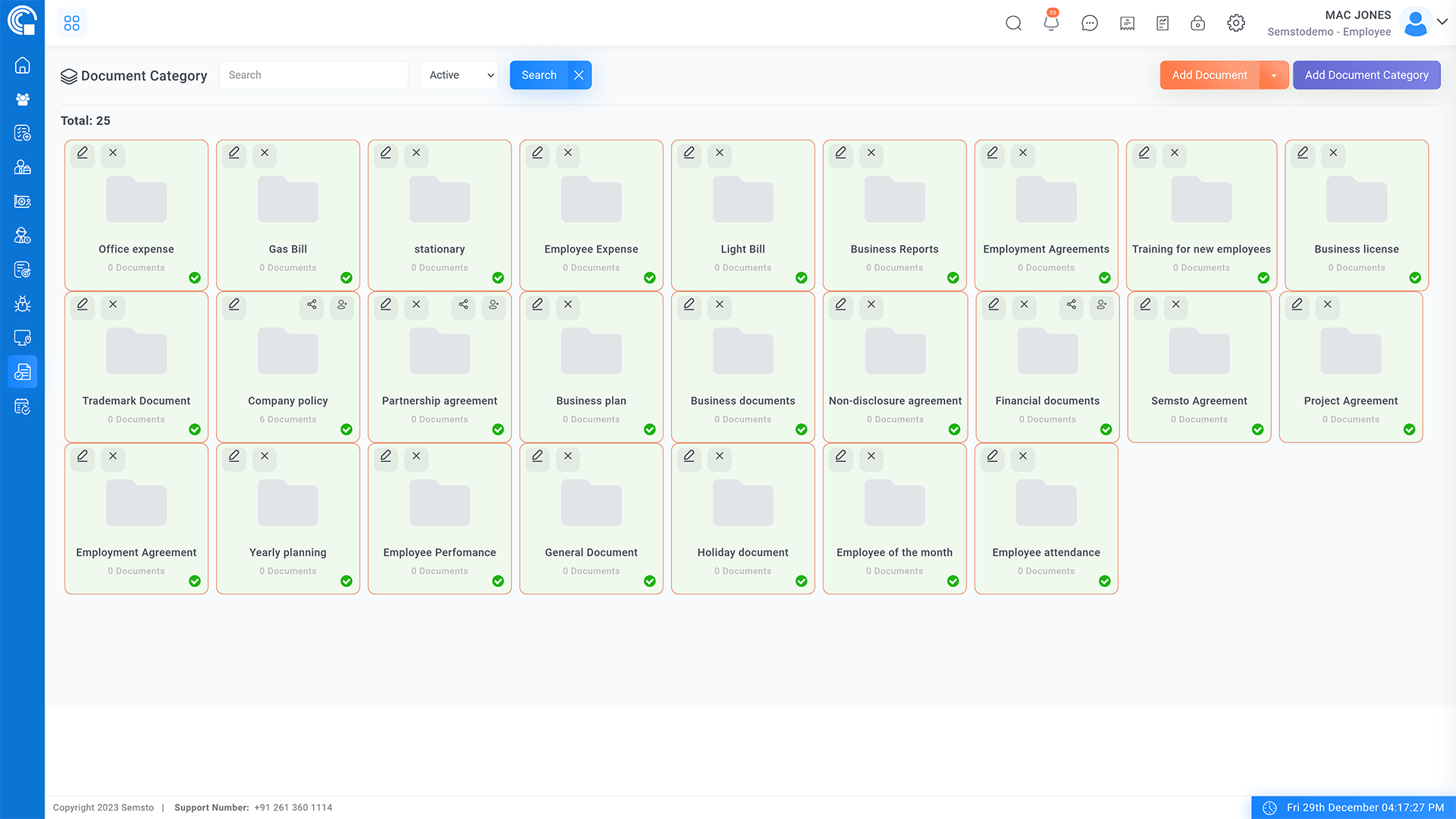
Manage Goals
Allow employees to set personal and professional goals within the system.
Enable tracking of goal progress over time.
Facilitate the creation of action items linked to these goals.
Offer a feature to connect and update progress related to specific action items.
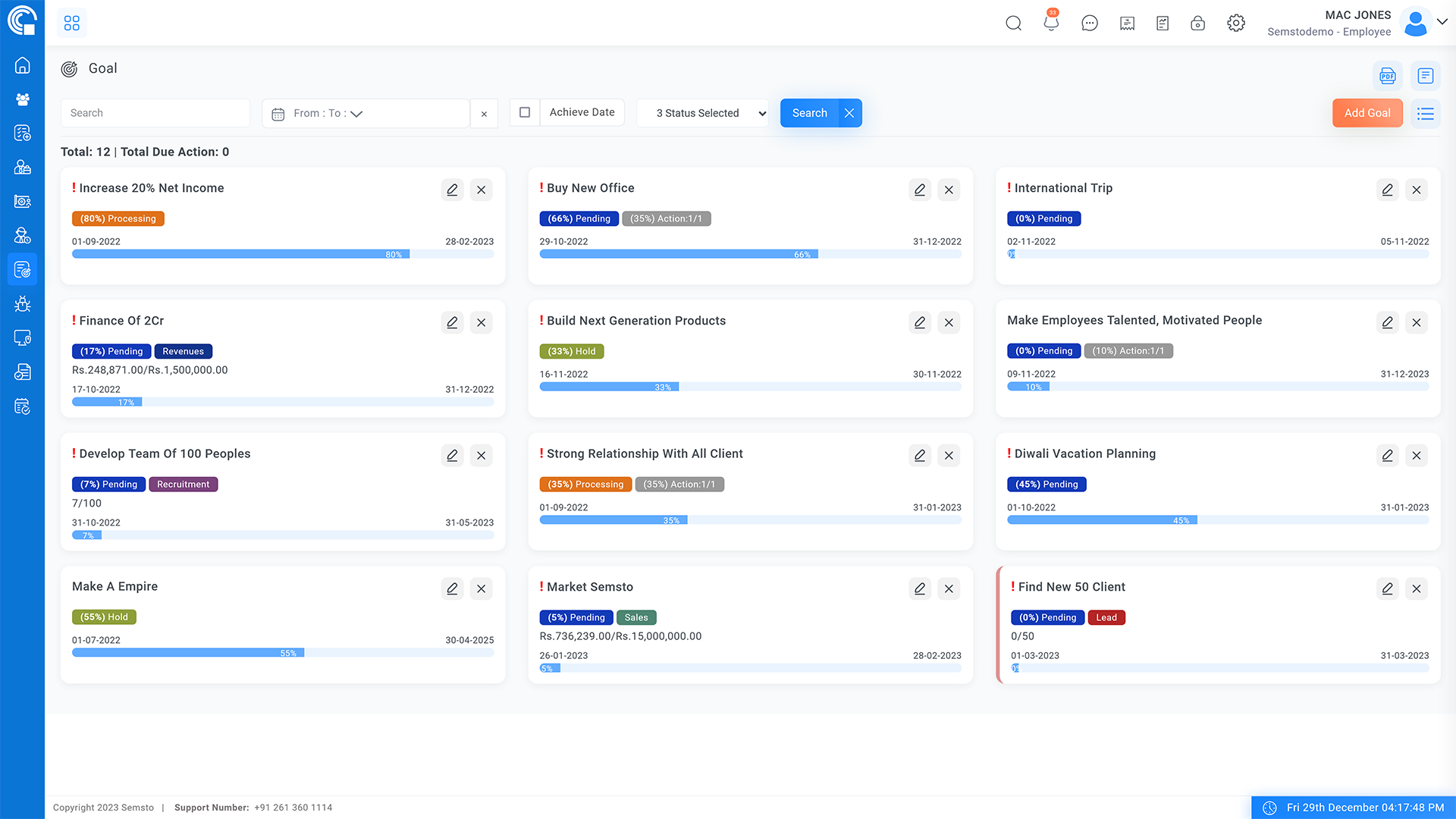
Swot Analysis
Provide tools for employees to conduct SWOT (Strengths, Weaknesses, Opportunities, Threats) analysis.
Enable a feature to record and track past SWOT analyses.
Assist employees in measuring their progress based on historical SWOT data.
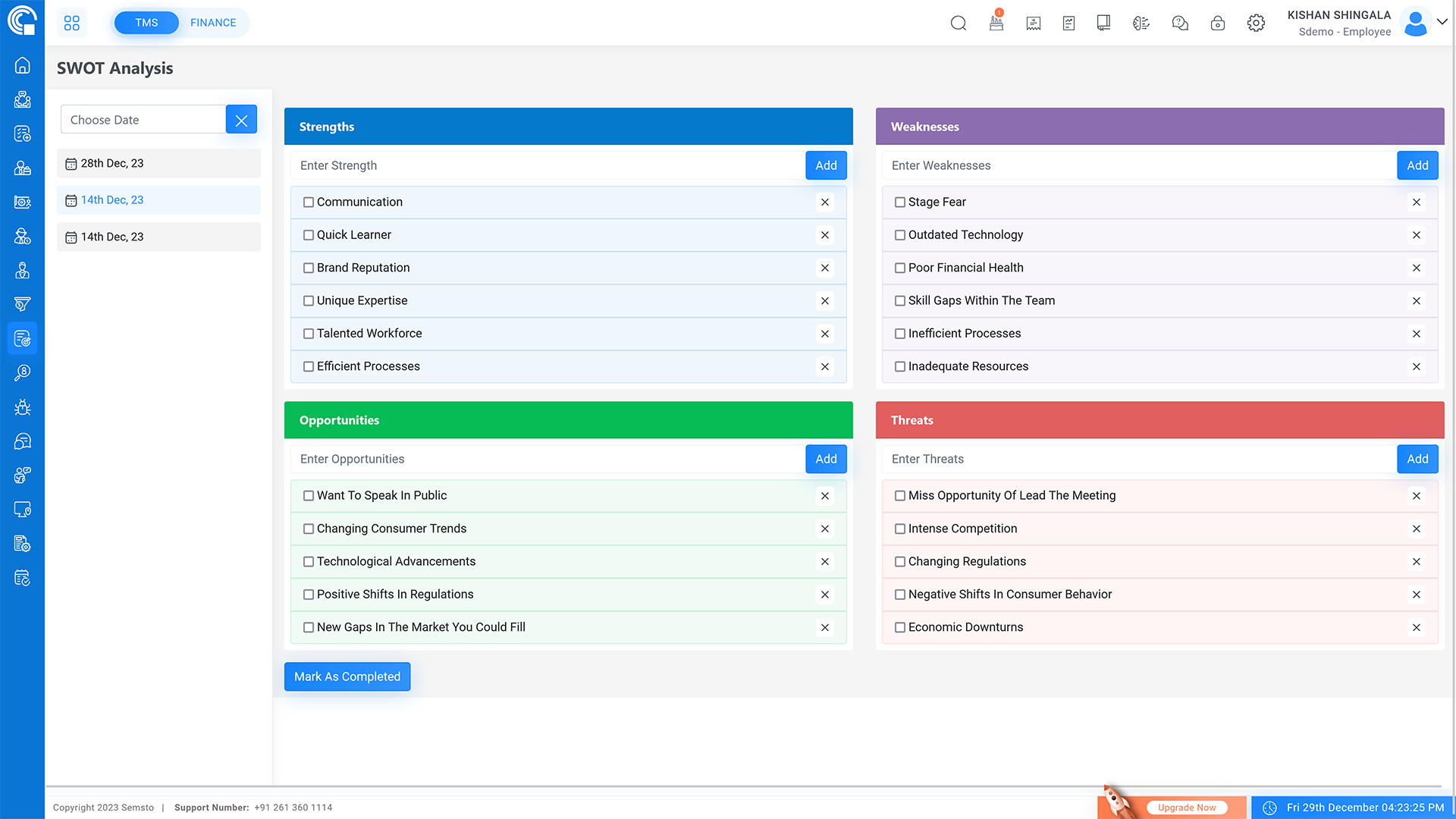
Pain Points
Absence of tools for employees to efficiently carry out routine operations
Frequent disputes related to attendance and salary
Inadequate systems for task assignment and follow-up
Inefficient management of employee requests and disputes
No established process for claiming reimbursements
Lack of a streamlined process for handling leave requests
Internal meetings that are ineffective and time-consuming
Absence of a system to manage and track asset requests
Inadequate sharing and management of documents with employees
Lack of tools for effective employee goal management
Absence of tools for conducting and tracking growth analysis
Why Employee Panel?
How semsto help organization by providing interface for employee and organization communication.
Semsto's employee panel provides a range of benefits to organizations and their employees:
Self-Service: Semsto's employee panel provides employees with a self-service platform where they can access and manage their own information, such as personal information, pay stubs and leave requests.
Easy Communication: Semsto's employee panel provides a secure and efficient platform for communication between employees and HR teams, reducing the need for manual communication and increasing efficiency.
Real-Time Access: Employees can access their information and communicate with HR teams in real-time, eliminating the need for delayed responses and improving overall efficiency.
Streamlined HR Processes: Semsto's employee panel streamlines HR processes by providing a centralized platform for HR teams to manage employee information and respond to requests in a timely manner.
Improved Employee Engagement: By providing employees with easy access to their information and a secure platform for communication with HR teams, Semsto's employee panel helps to improve employee engagement and satisfaction.
Better Compliance: Semsto's employee panel helps organizations to maintain compliance with relevant laws and regulations, reducing the risk of legal action and improving overall compliance.
Increased Productivity: By streamlining HR processes and providing employees with easy access to their information, Semsto's employee panel helps to increase productivity and efficiency.
Manage Overtime and Leave Requests
Overall, Semsto's employee panel provides organizations and their employees with a comprehensive and efficient platform for HR management, improving overall efficiency, compliance and employee engagement.
Manage Overtime and Leave Requests
Semsto can help organizations manage overtime and leave requests in the following ways:
Overtime Requests: Employees can submit overtime requests through the employee panel and HR teams can review and approve/reject the requests. The status of the request is updated in real-time, providing both employees and HR teams with visibility into the request.
Leave Requests: Employees can submit leave requests through the employee panel and HR teams can review and approve/reject the requests. The status of the request is updated in real-time, providing both employees and HR teams with visibility into the request.
Leave Balance Tracking: Semsto tracks leave balances for each employee, providing HR teams with a centralized view of the leave balances and ensuring that leave is managed effectively.
Overtime Management: Semsto provides HR teams with the ability to manage overtime effectively, including tracking and reporting on overtime requests and ensuring that overtime is managed in compliance with relevant laws and regulations.
Improved Compliance: Semsto's employee panel helps organizations to maintain compliance with relevant laws and regulations for overtime and leave management, reducing the risk of legal action and improving overall compliance.
Overall, Semsto helps organizations to manage overtime and leave requests effectively and efficiently, improving compliance and reducing the risk of legal action.
Goal Management
Using a tool for employee goal management can bring several benefits to an organization, including:
Increased Alignment: The tool helps align individual employee goals with the overall goals of the organization, improving overall alignment and direction.
Improved Tracking: The tool provides a centralized and streamlined way to track employee goals, making it easier for managers and HR teams to monitor progress and provide support as needed.
Better Performance Management: The tool provides a platform for performance management, making it easier to set, track and evaluate employee goals and provide regular feedback and coaching.
Increased Engagement: The tool helps engage employees by providing them with clear goals and expectations and giving them the tools they need to track their progress and measure their success.
Improved Communication: The tool helps improve communication between employees, managers and HR teams by providing a centralized platform for goal setting, tracking and feedback.
Data-Driven Decisions: The tool provides valuable data and insights into employee performance, helping HR teams and managers make informed decisions about talent development, compensation and performance management.
Overall, using a tool for employee goal management can help organizations improve alignment, tracking, performance management, engagement, communication and data-driven decision making.
Asset Management
Using an asset management tool can bring several benefits to a software company, including:
Improved Tracking: The tool provides a centralized and streamlined way to track assets, making it easier for teams to monitor and manage their usage.
Increased Productivity: By reducing manual processes, automating tracking and providing real-time data, an asset management tool can help teams become more productive and efficient.
Better Utilization: The tool can help organizations optimize their asset utilization by tracking utilization rates and helping teams better understand when assets are underutilized or overutilized.
Improved Budgeting: With accurate and up-to-date information about asset usage, organizations can make more informed decisions about budgeting and allocate resources more effectively.
Enhanced Security: The tool can help organizations improve security by tracking who has access to assets and keeping track of their location and usage.
Increased Transparency: The tool provides a centralized platform for tracking assets, making it easier for teams to collaborate, share information and make decisions based on real-time data.
Overall, an asset management tool can help software companies improve tracking, productivity, utilization, budgeting, security and transparency, making it a valuable tool for managing assets and ensuring their effective usage.


